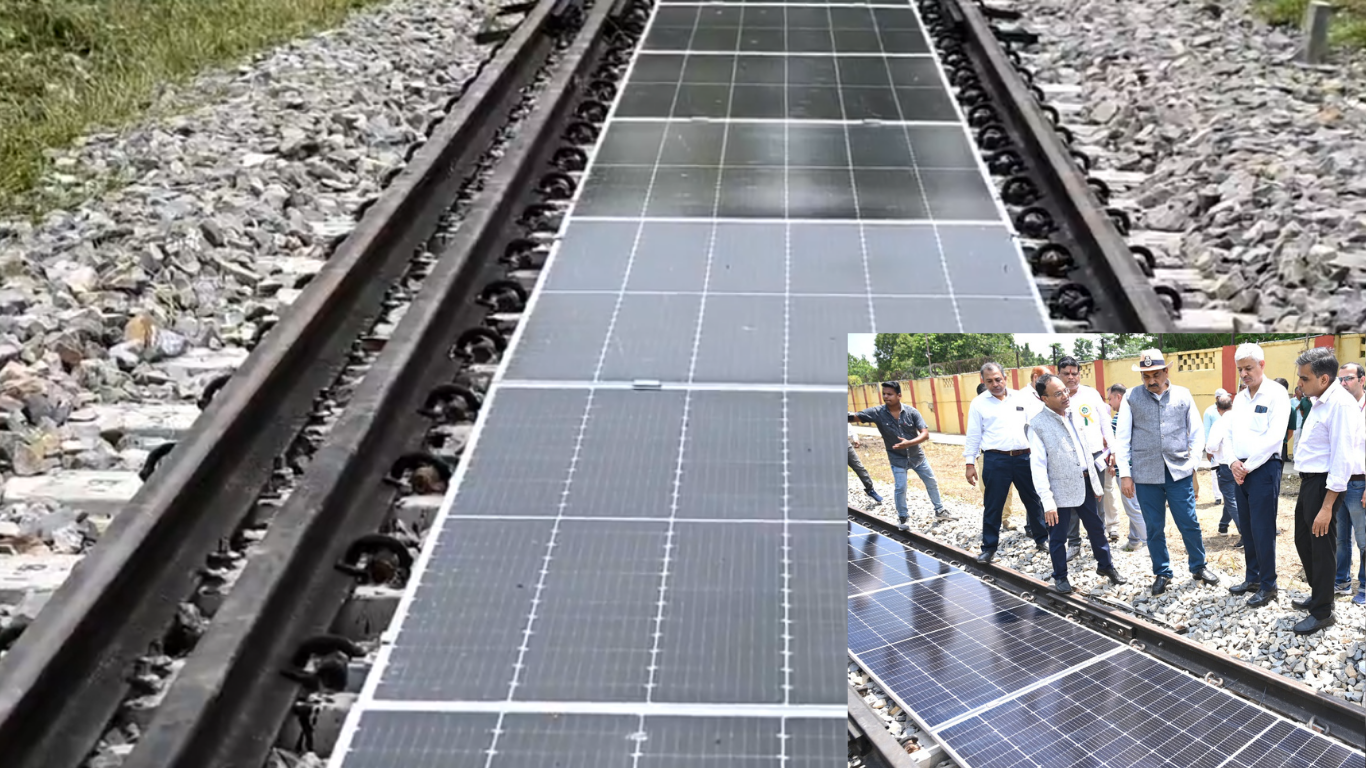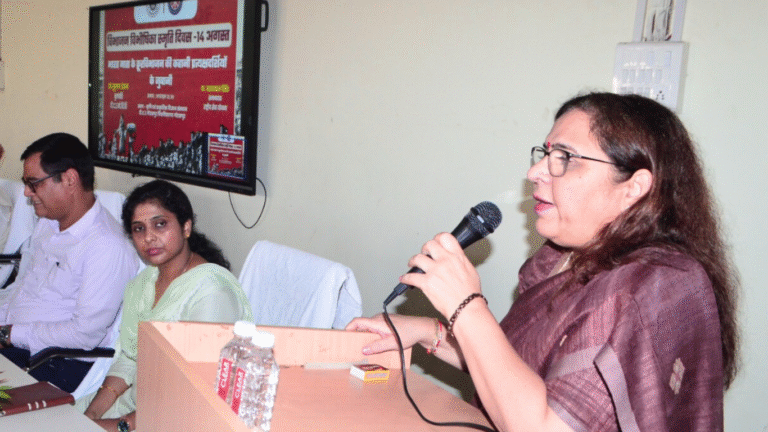
Varanasi, Uttar Pradesh – In a fresh push for clean energy, the Banaras Locomotive Works (BLW) in Varanasi has just set up India’s very first portable solar panel system right between active railway tracks. This exciting project marks a smart way to make electricity without needing extra land, and it’s already showing great results after a successful test run. This move is being hailed as a key step toward making Indian Railways more eco-friendly.
The idea came from BLW’s team, who wanted to use the empty space between train tracks for solar power. They installed the system on a 70-meter stretch of track at their workshop, specifically on line number 19. It includes 28 solar panels that together can produce up to 15 kilowatts peak power. These panels are special because they’re designed to be removed easily when trains need maintenance or repairs. No more worries about disrupting schedules, just unscrew some bolts, and they’re out of the way.
One big challenge was dealing with the shakes and rattles from passing trains. To fix that, the engineers used rubber pads under the panels to soak up the vibrations. They also stuck the setups to the concrete sleepers with strong epoxy glue, making sure everything stays put. Each panel is about 2.2 meters long, 1.1 meters wide, and weighs around 32 kilograms. They’re made with high-efficiency mono-crystalline cells that can handle tough weather, and they even have a bifacial design to catch sunlight from both sides.
According to reports, this setup didn’t mess with any train movements during the trial, which is a huge win. BLW’s public relations officer, Rajesh Kumar, shared that the panels are easy to clean and maintain, keeping them working at their best. The whole thing is homegrown, using Indian-made tech, which adds to the pride factor.
Why does this matter? Well, Indian Railways has a massive network, over 99,235 kilometers of tracks. If this system spreads out, it could generate a ton of green power. Experts estimate about 3.21 lakh units of electricity per kilometer each year. That’s enough to light up stations, signals, and more, all without burning fossil fuels. It fits perfectly with the government’s goal of net-zero carbon emissions by 2070. Plus, since it uses existing track space, there’s no need to buy or clear new land, saving money and avoiding headaches.
BLW isn’t new to solar energy. They’ve already got rooftop panels at their facilities, but this track-based system takes it to the next level. Under the leadership of General Manager Naresh Pal Singh, the team officially launched it with a ribbon-cutting ceremony. Videos and photos from the event show the sleek panels lined up neatly between the rails, ready to soak up the sun.
Looking ahead, BLW plans to expand this across more tracks. If it works well in real-world conditions, it could inspire similar projects elsewhere in the country. This comes at a time when India is ramping up renewable energy efforts, from wind farms to solar parks. Just last month, there were some mix-ups online about a Swiss company doing something similar, but fact-checks cleared that up, this is purely an Indian innovation.
For everyday folks, this means cleaner air and a more sustainable future. Trains are already a green way to travel, and now they’re getting even greener. As one railway worker put it in a local report, “It’s like turning our tracks into power plants.” With climate change knocking at the door, ideas like this show how old systems can adapt and thrive.
This breakthrough from BLW is a reminder that innovation can come from unexpected places, even right under the wheels of a speeding train. Keep an eye on this, it might just power the next big change in India’s energy story.



